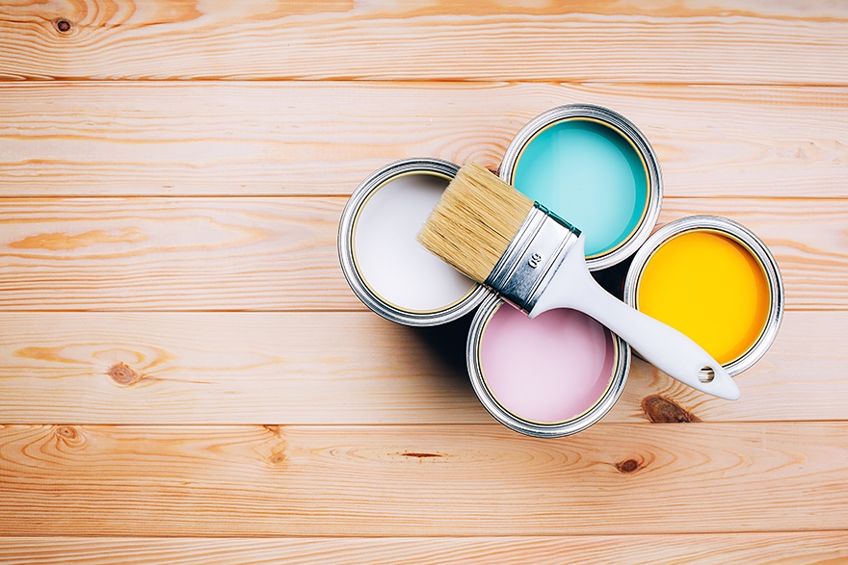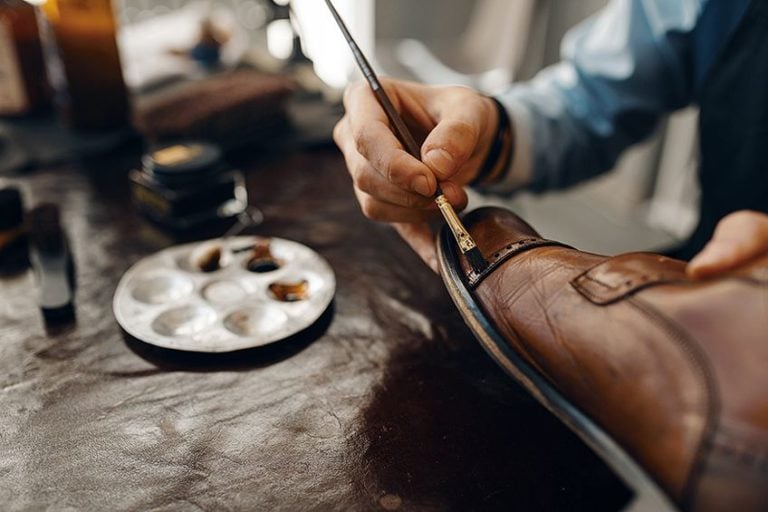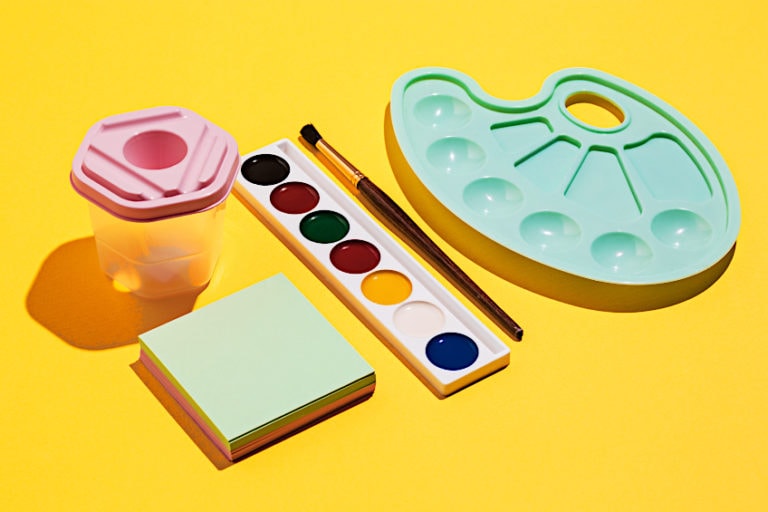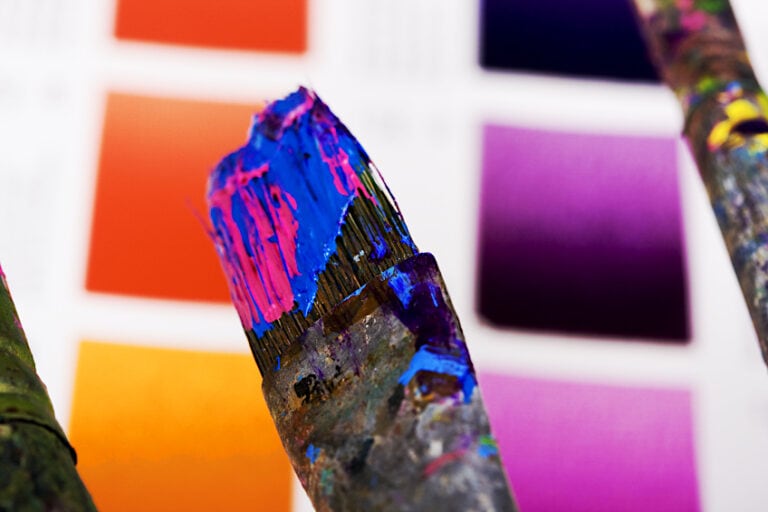Acrylic vs Latex Paint – Difference Between Acrylic and Latex Paint
This post may contain affiliate links. We may earn a small commission from purchases made through them, at no additional cost to you.
There is an assortment of different paint options available on the market, and it may cause you to question the difference between latex and acrylic paint. What are the benefits of each? Why should you pick one over the other? Why exactly do latex paints seem to be so affordable in comparison to acrylic paints? We hope to cover these questions in the following article.
Table of Contents
What Is Latex Paint?
It is important to understand how each paint type is made, what they are, and of course what they are used for. Latex paint is a water-based paint and, unlike acrylic paint, it does not contain any chemicals. This means that latex paint is easier to wash off your paintbrushes and any surfaces. The lack of chemicals also means that latex paint is a lot thinner and dries quicker. While acrylic paint is only available in a matte finish, latex can be found in an assortment of gloss finishes.
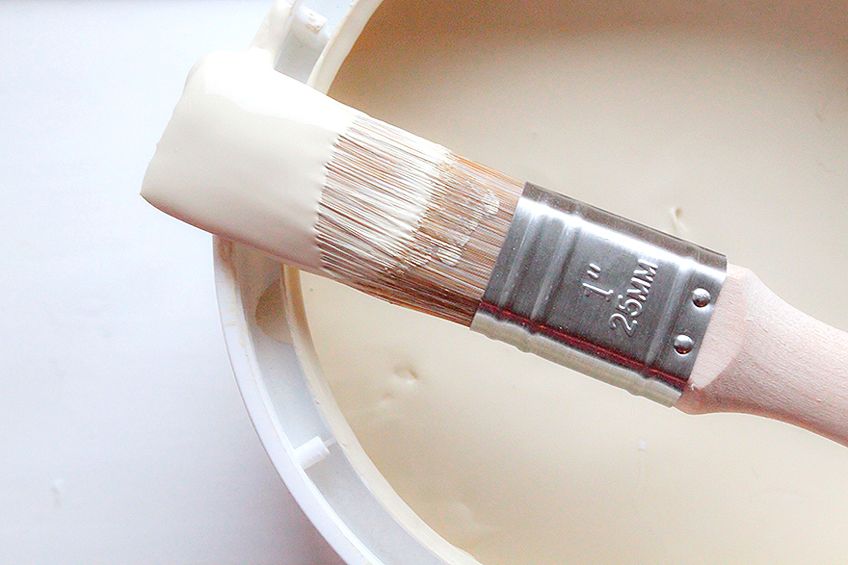
What Is Latex Paint Used For?
Both mediums can be used for paint jobs and home projects, as they are paints that are durable indoors and are available in an assortment of colors. Latex tends to be available in larger quantities than acrylic, meaning that it is usually the go-to cover for bigger areas. As latex paints are water-based, they normally do not give off any odor and are non-toxic, making them the safer option for exposure to your skin, children, and pets.
Benefits of Using Latex vs Acrylic Paint
Latex paints are a great option for indoor painting as a result of their resistance to chalking and ability to maintain their color. They are also low in toxicity and emit a low odor, making them all the better for indoor painting. If you need to paint in an area with high moisture levels and humidity, latex paint is ideal – you can stop any fungi such as mold from forming when using latex paint, as it acts as a sealant.
Only ever apply your latex paint to a clean and completely dry surface in order to achieve the best results. You can use latex paint on a number of different surfaces, including wood, metal, and cement, to name but a few options. Do not forget how quickly latex dries, making it great to work with.
PROS
- Resistant to chalking
- Water-based
- Resistant to mold and mildew
- Non-toxic and safe
- Can be purchased in an assortment of finish options
- Does not give off harsh fumes
- Dries quickly
- No chemicals
- Can be cleaned up with ease
CONS
- Not breathable as a paint
- Not very durable when used outdoors
- To achieve the best results, you should only apply it to a primed and dry surface
- Not resistant to extreme temperatures
What Is Acrylic Paint?
Acrylic paints are made up of acrylic resin and chemicals. It is thanks to the resins that they get their vibrancy and texture. They are considered by artists and crafters to be easy to use and a quick medium. If you are working with acrylic house paints, you will require harsh chemicals or thinners to clean them off of your brushes and the area you have worked in. They have been formulated to be utilized or sprayed on interior walls, although some products can also be used on exterior surfaces. You can also purchase acrylic paint in larger cans if you have a bigger project, such as painting your whole house.
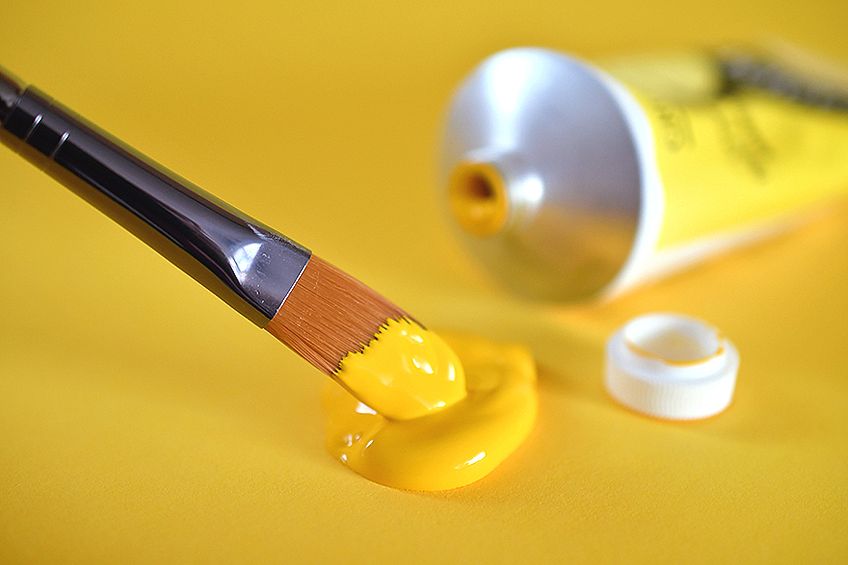
What Is Acrylic Paint Used For?
Acrylic paint can be used on a number of different surfaces such as canvas, wood, plaster, or paper – and those are just a few options. These paints are perfect for tackling a DIY project or looking to upcycle furniture. Acrylic paints are easy to use, relatively affordable, and durable. A great benefit of acrylic paints is that they are breathable, which means that once the paints have dried, they have a greater resistance to water or sun damage. Acrylic paints can contract and expand thanks to their elastic qualities, so they are perfect for use outdoors, and will not fade with time.
Benefits of Acrylic vs Latex Paint
Acrylic paints are better than latex paints at adhering to both outdoor and indoor surfaces, and are considered to be more durable. They are a great option for wood and furniture renewal, as they can be applied with ease to porous surfaces. Acrylic paints are very easy to apply and are available in a wide assortment of rich colors to choose from. Another great thing about acrylic paints is that they are not impacted by climate or weather conditions either.
PROS
- Available in an assortment of colors
- Paint expands and contracts naturally, meaning that peeling and cracks will not form
- Extremely versatile – can be used on an assortment of surfaces
- Breathable
- Can be used both outdoors and indoors
- Moisture and heat conditions will not affect the paint
- Will not fade over time
CONS
- Not a large variety of finishes available
- Available in smaller quantities than that of latex paint
- Chemical solvents are needed to clean up
Acrylic Latex Paint – What Is it?
If you are looking for something a little different, there is also an acrylic latex paint option. This is thought to be one of the best latex paint options available to purchase – just think of it as the best elements from both paint types combined.
The latex paint has had acrylic resin added to it, which increases its durability and potential adhesion. This also ensures that your paint can expand and contract when there are weather and temperature changes, all the while ensuring it maintains its glossy finish. Other paints normally crack and peel when applied outdoors as they do not have these benefits.
Thanks to these paints containing acrylic resin, acrylic latex has superb adhesion to surfaces such as wood and metal, making it perfect for painting furniture and other pieces. The acrylic resin also ensures that the paint is temperature-resistant, so it is an ideal option for use on exterior surfaces.

Benefits of Using Acrylic Latex
Acrylic latex paint offers you the best of both worlds and, unlike standard latex paint, it is free of any chemical solvents and is considered to be environmentally friendly. Acrylic latex paint is easy to clean up, as you only require soap and water to clean it, and overall it is a safer paint to use. With time, your acrylic latex paint will not crack, yellow, or fade, and it has amazing color retention that far supercedes that of any other oil-based or latex paints.
Acrylic latex paints are resistant to moisture damage, mold, chipping, and a variety of other problems you may face should you select an alternative paint option. They are fast-drying and easy to maintain after you have applied them to your chosen surface. Should your walls have scuff marks or dirt, they can simply be wiped clean and will not remove or damage the paint in any way.
All of that being said, like anything there are some disadvantages. Namely, the paint is relatively expensive and can only be applied to a surface that has been sufficiently primed, prepped, and cleaned. Also, there is potential for this water-based paint to cause rust to form when it has been generously applied to metals.
PROS
- Offers best of both acrylic and latex
- Can be applied to many different types of surfaces
- Withstands exposure to temperature changes and extreme weather conditions
- Water-based
- Can be used both outdoors and indoors
- Safe to use and can be cleaned up with ease
- No solvents or chemicals are required
- Superb color retention
- No cracking, yellowing, or chipping
CONS
- Pricey
- Will not work on rough, wet, or dirty surfaces
- Can result in certain metals rusting
Now that we have described the different paint options in detail, we will offer some handy tips on how to use these particular mediums for your projects.
Tips and Tricks When Using Latex and Acrylic Paints
If you want to achieve the best results when painting furniture or your home, some steps can help you achieve this. We have listed the basic materials you will need as well as some helpful instructions on using your acrylic latex paint.
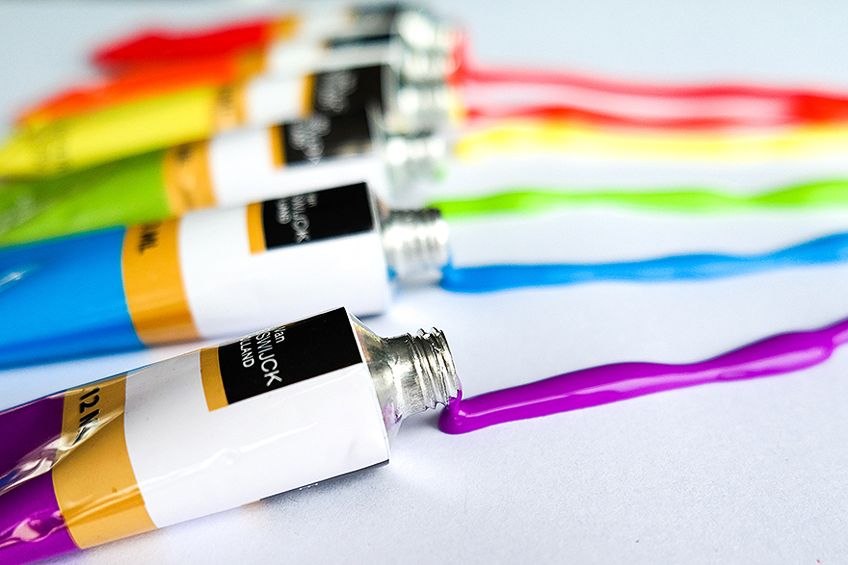
You Will Require
- Paint
- Drop cloth
- Rollers and brushes
- Old rag
- Primer
- Tape
Methods
- Preparing your surfaces is imperative. You can do this by wiping your surface with a damp cloth to ensure any dirt or marks have been removed. Next, lay down an old sheet or drop cloth, ensuring that the floor is completely covered.
- Apply some tape to any areas that you do not want to get paint on.
- Once you have gotten your area ready, you can begin to apply your primer, ensuring that you allow it to dry completely before moving on to the next step. How many layers of primer you apply and the size of the area will impact how long it will take to dry. We suggest that you apply two to three layers of primer.
- Once your primer has dried, you can start applying your paint to the furniture or walls. If you wish to use more than one layer of paint, always ensure that the previous layer is completely dry before applying the next coat.
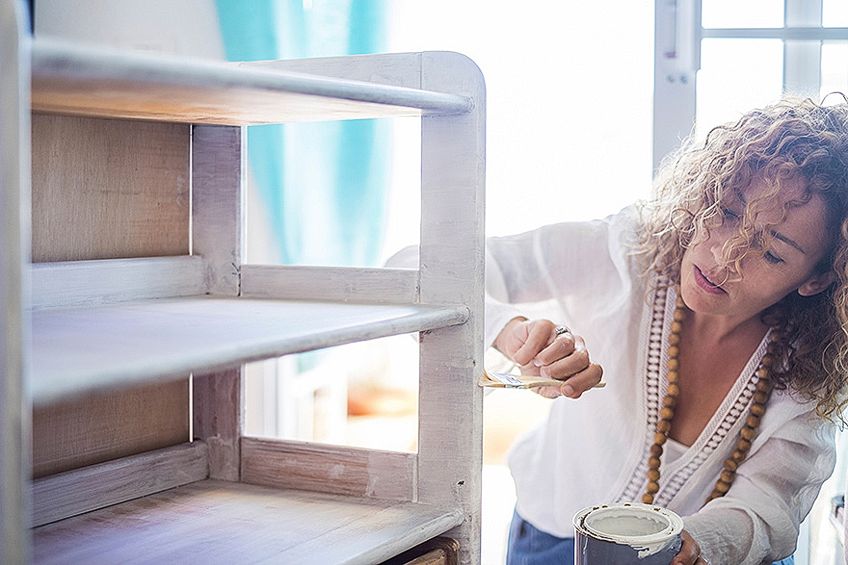
- Whether you should use a roller or a paintbrush to apply your paint will depend on the area you are painting, in particular the size of the space. If you are painting a smaller space, a thinner brush is ideal, as you can always go over an area with a roller to help even out any areas and remove bubbles.
- When painting a wall, we recommend that you begin with the edges or trim before you work on the larger space. Use a small brush when painting the trim to ensure that you cover any hard-to-reach areas, and then use a brush over the area before the paint dries to help create a smoother effect. Following this method will ensure that your edges do not look different to the larger surface area.
- Allow your surface to dry completely, which can take a day or two. You can then wipe it down using a damp cloth, confident that you will not cause the paint any damage.
Hopefully, we have provided you with the knowledge you need in order to tackle your home DIY project with either acrylic or latex paint!
Frequently Asked Questions
What Is Acrylic Latex?
Acrylic latex is a water-based paint that hhas acrylic resin included in it. Acrylic Latex paint has the best of both acrylic and latex paints, and is a long-lasting, heavy-duty paint. Sadly, acrylic latex is very costly.
What Is the Difference Between Acrylic Paint and Latex Paint?
Acrylic paint is a chemical-based paint while latex paint is water-based, which means that acrylic paint is a more versatile and tougher option, while latex paint is the safer option. Latex can be cleaned with ease and is available to purchase in an assortment of finishes. Another positive is that it does not give off any toxic fumes. Acrylic paint can be bought in a matte finish with a few gloss options available, but with nowhere near as many options as those of latex paint. Acrylic paints can be used on an assortment of different surfaces, as they are breathable and elastic.
Is Acrylic Paint Water-Based?
Acrylic paint contains acrylic resin and is a chemical-based paint. This makes the paint a lot thicker than a water-based option, which cannot be cleaned using just soap and water. Instead, you will have to use thinners or chemicals to remove them. The formation of acrylic paint makes them more durable than the likes of latex or oil paints.
Larissa Meyer is a 32-year-old mother from Michigan and creative spirit since childhood. Her passion for painting and drawing has led her to an education as an illustrator and a career as a freelance graphic designer. She has a Bachelor of Fine Arts in Illustration and a degree in Graphic Design. Larissa is a talented artist who is able to master a wide range of styles and techniques to bring her artistic vision to life. Her greatest passion is currently fluid painting and epoxy resin art. Larissa’s love for art and her knowledge and experience in illustration make her the perfect Creative Director for our fluid-painting.com team. She is the creative head of our team and shares her passion and knowledge with our community through articles and tutorials.
As a mother of a 2-year-old daughter, Larissa also understands the importance of fostering creativity in early childhood. She uses her experience and knowledge to help other parents inspire their children and develop their artistic skills as well.
Learn more about Larissa Meyer and about us.

